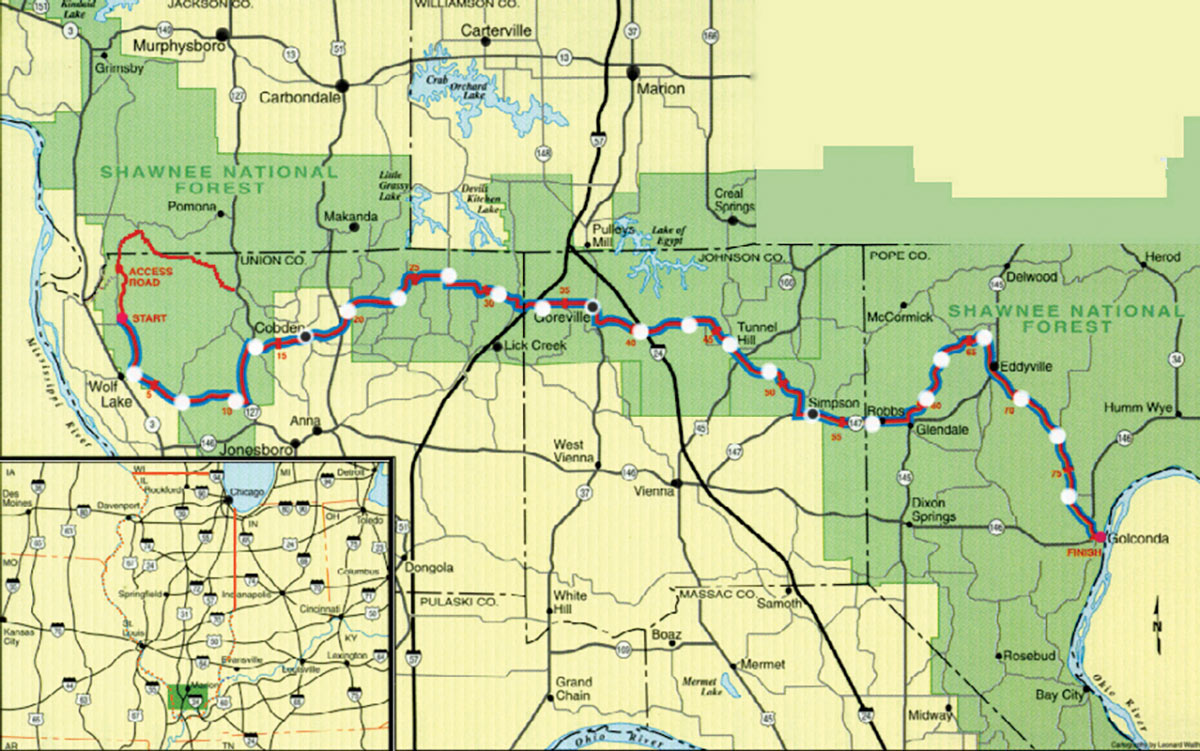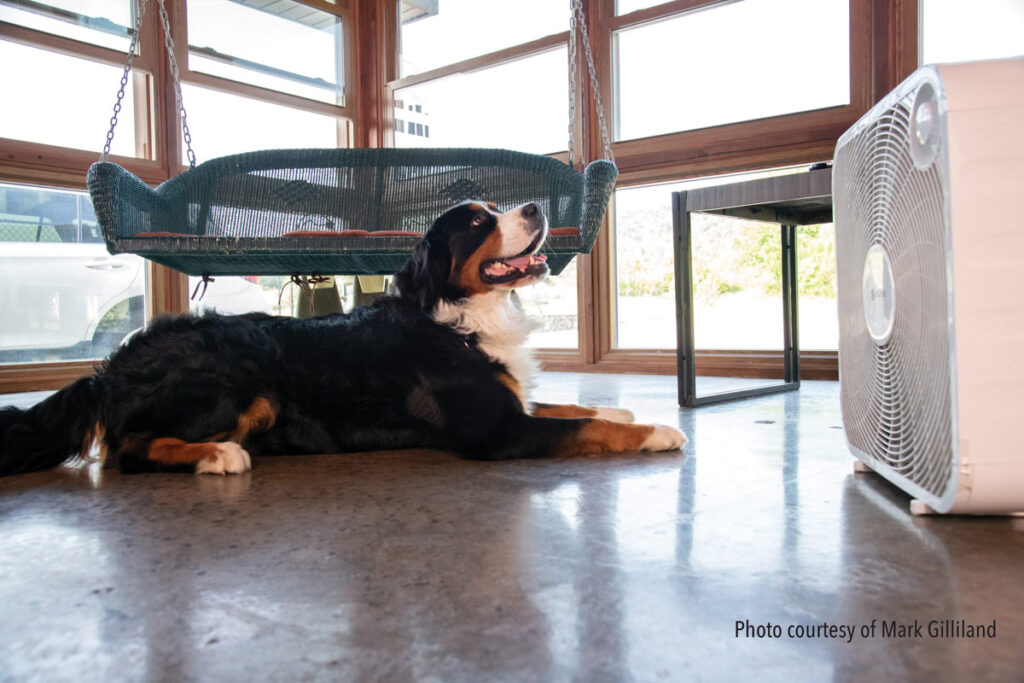
Steve Kidd sets his alarm for 4 a.m. He has big plans for the day. He’s not alone in getting up that early on a Saturday. Friends and colleagues join him in rising before the sun — in fact, 2,000 of them — all with the same agenda. They are going to run across the state of Illinois.
Kidd, of Millstadt, and a host of other runners from around the nation and world descend on deep southern Illinois one Saturday each April for the annual River to River Relay. This 80-mile race features teams of eight taking turns carrying a relay baton through 24 segments, starting from the bluffs overlooking the Mississippi River in the northwest corner of Union County, through Johnson and Pope counties, and ending at the usually quiet town of Golconda on the banks of the Ohio River.
Around 6 a.m., as the first runners traverse the 3.6-mile steep gravel downhill that makes up the relay’s inaugural section, their teammates make their way to the first exchange zone, where the team’s No. 2 runner takes over for the next leg.

“The race itself is crazy,” says Kidd, who has participated in nearly a dozen River to River Relay races and plans to in the 2025 race set for April 26. “Once you start running, you’re just in and out of the van all day. You play a sort of hopscotch all day long, picking up one runner and dropping the next one off in these exchange zones.”
Team leaders spend the days leading up to the race analyzing the segments, trying to match runners’ strengths to the maps and graphs in the race packet, each including information on the various segments of the relay. Runner No. 1 (who runs sections 1, 9 and 17) must like running downhill. Likewise, many teams assign their strongest runner to segments 6, 14 and 22 (the latter notorious for being the most brutal leg of the entire race, thanks to a nearly 350-foot climb in elevation).

“It’s split up like a bunch of 5K runs,” Kidd explains, “so runners are doing three 5Ks in a day, and everyone’s going to run somewhere between 9 and 12 miles in total, depending on which legs of the race they run. You take turns running all day.”
He says running with many other athletes and spending seven to eight hours in the van with teammates makes for great camaraderie. He adds that the environment is a huge plus, too. “The scenery is maybe the best part of it; some of the views are great,” he adds, pointing out that the route runs through portions of the Shawnee National Forest and the Southern Illinois Wine Trail.
“This is a great event that showcases the opportunities across southern Illinois, not only for running, but [for] hikers, bicyclists and so many others,” explains Carol Hoffman, executive director of the Southernmost Illinois Tourism Bureau. “It definitely benefits the region.”
Former Race Director Brad Dillard says those benefits include significant boosts to area businesses. While it has been nearly two decades since an economic impact study was conducted, runners’ meals, rental vans, hotel rooms and other experiences add up to millions of dollars. Plus, he adds that many out-of-town and out-of-state runners find the region so welcoming that they return.
But, they come first to run through the southern Illinois countryside and pass a baton, leapfrogging from one exchange point to the next. The race’s official website (r2rrelay.com) tries to capture the essence of the race:
“The relay is the equivalent of three hard races in one day. Runners recover as best they can while other team members take a turn, encountering mud, hills, dust, hills, sweat, hills … They learn to welcome the cramped quarters of a vehicle occupied by seven other muddy, dusty, sweaty, tired people and wonder why they were picked to tackle the terrible hill on section 22. The euphoria on reaching the finish line at the Ohio River, running in together as a team, resolves all the doubt.”
Once runners approach the finish line 11 or 12 hours after the race began, it has become tradition that teammates join the anchor runner in the last hundred yards to cross the finish line. Once they’ve completed the race, they find live music, massage therapists, food vendors and their earned “River to River Relay Finisher” T-shirts, which they almost always don before taking a team photograph on the levee overlooking the Ohio River.
Dillard says the race has become a “must” for many runners. Each year, representatives of more than 500 prospective teams vie for 190 slots when the first-come-first-served online registration system opens each fall. “We’ve had the website go down several times because of the flood of hits. Every year we get runners from 30 or 40 different states. Runners from all 50 states and even some from overseas have competed.”
Some teams have better odds of getting into the relay each year, as organizers hold 60 slots for top-finishing teams from the prior year. And, while the relay’s rules and structure are taken seriously, the event is meant to be fun. In past years, runners have worn chicken suits, some exchanges have featured disc jockeys, and Dillard says there’s even been one on-course marriage proposal involving a couple who met on the roads of southern Illinois.
The relay’s longevity (the initial race was in 1987), is a testament to the volunteers, local government and law enforcement personnel and others who make the event, well, run. “We have several hundred volunteers out on the racecourse, regardless of the weather — amateur radio operators, emergency medical service providers and more. Most relays don’t have that,” Dillard says.
“It’s a great event with a great tradition,” current Race Director Kyle Orso told The Southern Illinoisan newspaper. “It is hard to explain to people who do not run, but the emotions and the connections people have with this relay are something you don’t get anywhere else.”











